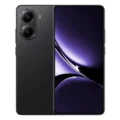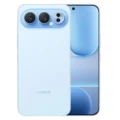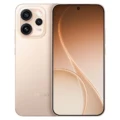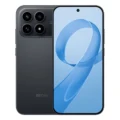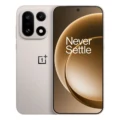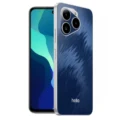Xiaomi Redmi Turbo 4 (16GB+512GB)







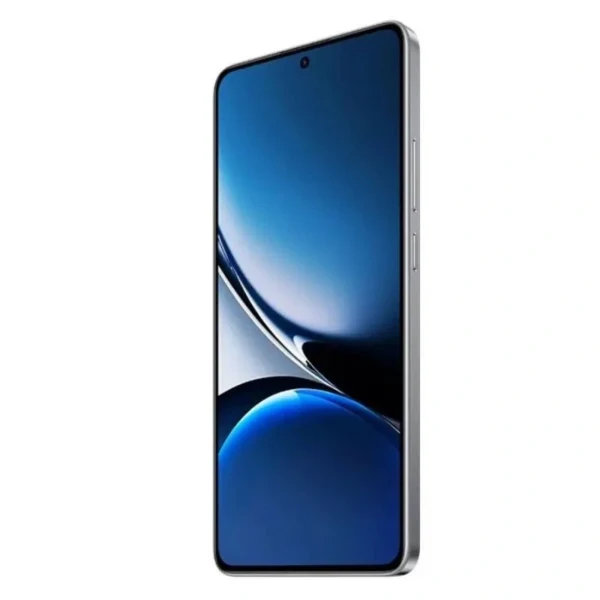

Xiaomi Redmi Turbo 4 price in bd
Xiaomi Redmi Turbo 4 is now available in variants 16GB+512GB. Now, Xiaomi Redmi Turbo 4’s 16GB+512GB Unofficial Price is 39,500 Taka in Bangladesh.
Full Specifications
Price in BD
| Unofficial | 16GB+512GB - 39,500 Tk |
General Info
| Announced | 2 January, 2025 |
| Status | Available |
| Released | 2 January, 2025 |
| Brand | Xiaomi |
| Model | Redmi Turbo 4 |
| Made By | China |
Network
| Technology | GSM / CDMA / HSPA / CDMA2000 / LTE / 5G |
| 2G bands |
GSM 850 / 900 / 1800 / 1900 CDMA 800 |
| 3G bands |
HSDPA 800 / 850 / 900 / 1700(AWS) / 2100 CDMA2000 1x |
| 4G bands | 1, 3, 4, 5, 8, 18, 19, 26, 28, 34, 38, 39, 40, 41, 42, 48, 66 |
| 5G bands | 1, 3, 5, 8, 28, 38, 40, 41, 48, 66, 77, 78 SA/NSA/Sub6 |
| Speed | HSPA, LTE, 5G |
Body
| Dimensions | 161 x 75.2 x 8.1 mm (6.34 x 2.96 x 0.32 in) |
| Weight | 203.5 g (7.20 oz) |
| SIM SIM (Subscriber Identity Module) is a small card that contains mobile network subscriber's account information. This allows the phone using the card to attach to a mobile network. The SIM card is most commonly associated with GSM and UMTS mobile networks. Moving a SIM card from one phone to another allows a subscriber to switch mobile phones without having to contact their mobile network carrier. SIM cards can also be used by a phone to store limited amounts of data, such as phone numbers and text messages. | Nano-SIM + Nano-SIM |
| Colors | Black, White, Blue |
| IP Rating | IP68 dust tight and water resistant (immersible up to 2m for 30 min) |
| Models | 24129RT7CC |
Display
| Display Type Display Technology => A number of display technologies and types used in mobile phones => TFT (Thin Film Transistor), IPS (In-Place Switching), OLED (Organic Light Emitting Diode), AMOLED (Active-Matrix Organic Light-Emitting Diode), Super AMOLED (an even advanced version of AMOLED), Resistive Touchscreen (Resistive touchscreens contain two layer of conductive material with a very small gap between them which acts as a resistance), Capacitive Touchsceen (Capacitive touchscreen technology consists of a layer of glass coated with a transparent conductor) | AMOLED |
| Size | 6.67 inches, 107.4 cm2 |
| Screen to Body | ~88.7% |
| Features | 68B colors, Dolby Vision, HDR10+, HDR Vivid, |
| Brightness | 1400 nits (HBM), 3200 nits (peak) |
| Refresh Rate | 120Hz |
| Resolution | 1220 x 2712 pixels |
| Aspect Ratio | 20:9 |
| Pixel Density Pixel Density (PPI) is refers to the concentration of pixels on a particular display, measured in pixels per inch (ppi). Pixel density is calculated by dividing the diagonal pixel resolution of a display by its diagonal size, higher pixel density better display quality. | ~446 ppi |
| Touch Screen | Capacitive Touchscreen, Multi-touch |
Performance
| Chipset Chipset is a group of integrated circuits designed to perform one or a more dedicated functions, often with real time computing constraints, Popular smartphones are equipped with more advanced embedded chipsets that can do many different tasks depending on their programming. | Mediatek Dimensity 8400 Ultra (4 nm) |
| CPU CPU (Central Processing Unit) mostly known as processors, CPU processes instructions in order to carry out certain functions that make your device operate properly. Processors are often described as the brain of computers, smartphones and tablets, Smartphones and tablets rely on processors to carry out their every task, Processors are an incredibly important factor in selecting any type of computing device, including your smartphone. | Octa-core (1x3.25 GHz Cortex-A725 & 3x3.0 GHz Cortex-A725 & 4x2.1 GHz Cortex-A725) |
| GPU GPU (Graphics Processing Unit) is a single-chip processor designed to rapidly manipulate and alter memory to accelerate the creation of images in a frame buffer intended for output to a display, This includes things such as lighting effects, object transformations, and 3D motion. | G720 MC7 |
| OS | Android 15 |
| UI | HyperOS 2 |
Memory
| RAM RAM (Random Access Memory) is a type of computer memory that can be accessed randomly, any byte of memory can be accessed without touching the preceding bytes that allows information to be stored and accessed quickly from random locations. RAM is the most common type of memory found in computer systems, smartphones, tablets and other electronic devices. | 16 GB |
| ROM | 512 GB |
| Card Slot Memory Card Slot is a special slot for inserting a memory card. Memory cards allow you to expand the phone's built-in memory, A memory card (sometimes called a flash memory card or a storage card) is a small storage medium used to store data such as text, pictures, audio, and video, for use on small, portable or remote computing devices such as mobile phones, mp3 players, digital cameras. | No |
| UFS | 4.0 |
Main Camera
| Dual |
50 MP, f/1.5, 26mm (wide), 1/1.95", 0.8µm, PDAF, OIS 8 MP, f/2.2, 15mm (ultrawide), 1/4.0", 1.12µm |
| Features | HDR, panorama |
| Flash Flash Light => There is commonly two types of flash lights are used in camera mobile phones, LED Flash (LED flash offers lower power consumption with drive circuitry that takes up very little room, LEDs can be strobed faster than any other light source), Xenon Flash (xenon flash produces an extremely intense full-spectrum white light for a very short duration) | LED flash |
| Video Recording | 4K@24/30/60fps, 1080p@30/60/120/240/960fps, gyro-EIS |
| Autofocus | |
| Settings | Exposure compensation, ISO control |
| Zoom | Digital Zoom |
| Resolution | 8150 x 6150 Pixels |
Selfie Camera
| Single | 20 MP, f/2.2, (wide), 1/4" |
| Video Recording | 1080p@30fps |
Sound
| Loudspeaker | |
| 3.5mm jack | |
| Others | 24-bit/192kHz Hi-Res & Hi-Res Wireless audio |
Connectivity
| WLAN Wi-Fi is a popular wireless networking technology using radio waves to provide high-speed network connections that allows devices to communicate without cords or cables, Wi-Fi is increasingly becoming the preferred mode of internet connectivity all over the world. | Wi-Fi 802.11 a/b/g/n/ac/6, dual-band, Wi-Fi Direct |
| Bluetooth Bluetooth is a wireless communications technology for exchanging data between mobile phones, headsets, computers and other network devices over short distances without wires, Bluetooth technology was primarily designed to support simple wireless networking of personal consumer devices. | 6.0, A2DP, LE, aptX, LHDC 5 |
| Positioning | GPS (L1+L5), GLONASS (G1), BDS (B1I+B1c+B2a), GALILEO (E1+E5a), QZSS (L1+L5), NavIC (L5) |
| NFC NFC (Near field communication) is a set of standards for smartphones and similar devices to establish peer-to-peer radio communications with each other by touching them together or bringing them into proximity, usually no more than a few inches. | |
| Infrared Infrared connectivity is an old wireless technology used to connect two electronic devices. It uses a beam of infrared light to transmit information and so requires direct line of sight and operates only at close range. | |
| Radio | |
| USB | Type-C 2.0, OTG |
Sensors
| Sensors Sensors are electronic components that detects and responds to some type of input from the physical environment. The specific input could be light, heat, motion, moisture, pressure and location, The output is generally a signal that is converted to use in computing systems, a location sensor, such as a GPS receiver is able to detect current location of your electronic device. | accelerometer, gyro, proximity, compass |
| Fingerprint | Under display, optical |
| Face Unlock | Yes |
Battery
| Battery Type Battery Type => Cell phones run on various kinds of batteries depending on the manufacturer, phone size or shape and features. There are basically four types of cell phone batteries => Lithium Polymer, Lithium Ion, Nickel Metal Hydride and Nickel Cadmium. | Si/C Li-Ion |
| Capacity Battery Capacity is a measure (typically in Amp-hr) of the charge stored by the battery, and is determined by the mass of active material contained in the battery. The battery capacity represents the maximum amount of energy that can be extracted from the battery under certain conditions. | 6550 mAh |
| Charging | 90W wired, PD3.0, QC3+ |
| Charging Time | 100% in 45 min |
Tests
PROS
- AMOLED, 68B colors, Dolby Vision, HDR10+, HDR Vivid
- Mediatek Dimensity 8400 Ultra (4 nm)
- NFC
- Infrared port
- Fast Charging 90W
CONS
- Card slot Not Support
- No 3.5mm jack
- No FM Radio
Available 2 Variant Phone in Bd:
Xiaomi Redmi Turbo 4 Highlights
The Xiaomi Redmi Turbo 4 is a powerful phone launched on January 2, 2025 and it’s already available in Bangladesh. It comes in two versions: 12GB RAM with 256GB storage priced at 35,500 Tk and a higher-end model with 16GB RAM and 512GB storage at 39,500 Tk. The phone supports all major network bands including 2G, 3G, 4G and 5G, so whether you’re making calls or streaming videos, you’ll get smooth performance almost anywhere. The dual Nano-SIM slot is handy if you use two numbers and its IP68 rating means it’s water and dust resistant — safe for everyday accidents.
The display is one of the best features of the Redmi Turbo 4. It has a big 6.67-inch AMOLED screen with a sharp 1220 x 2712 resolution. That means you get bright, vivid visuals with deep blacks, perfect for watching Netflix, YouTube or playing games. The 120Hz refresh rate makes scrolling super smooth and it supports Dolby Vision, HDR10+ and HDR Vivid for more lifelike colors. With a peak brightness of 3200 nits, the screen is easy to view even in bright sunlight, so you don’t have to squint outdoors.
Performance-wise, this phone is a beast. It’s powered by the new Mediatek Dimensity 8400 Ultra chip built on a 4nm process, which is fast and energy-efficient. The octa-core CPU and G720 MC7 GPU make it great for gaming, multitasking and handling demanding apps. It runs Android 15 with Xiaomi’s new HyperOS 2, giving you a fresh and fast user experience. Plus, with either 12GB or 16GB of RAM and UFS 4.0 storage, apps load quickly and switching between tasks feels seamless.
If you’re into photography, the Redmi Turbo 4 won’t disappoint. It has a 50MP main camera with optical image stabilization (OIS), so your shots are steady even if your hand isn’t. There’s also an 8MP ultrawide lens for landscape shots or group photos. You can shoot 4K videos up to 60fps and even ultra-slow-motion videos at 960fps. On the front, the 20MP selfie camera takes sharp, clear photos and records 1080p video. Whether you’re taking pictures for social media or vlogging, this phone has you covered.
Battery life is another strong point. With a massive 6550mAh battery, the Redmi Turbo 4 can easily last more than a full day even with heavy use. And when you do need to charge, the 90W wired fast charging can power it up fully in just 45 minutes. That means less time plugged in and more time using your phone. It also supports PD3.0 and QC3+ for faster and safer charging. Perfect for people always on the go.
The phone comes with strong connectivity options too. It supports the latest Wi-Fi 6, Bluetooth 6.0 with aptX and LHDC 5 for high-quality wireless audio, GPS with multi-satellite support, NFC and USB Type-C. It doesn’t have a headphone jack, but it delivers excellent audio with Hi-Res and Hi-Res Wireless audio. There’s also an under-display fingerprint scanner and face unlock for fast and secure access. Overall, the Redmi Turbo 4 is packed with modern features for an all-round flagship experience.
1. What is the battery capacity of the Xiaomi Redmi Turbo 4?
The Xiaomi Redmi Turbo 4 comes with a 6550 mAh battery also supports charging 90W.
2. Does the Xiaomi Redmi Turbo 4 support 5G?
Yes, the Xiaomi Redmi Turbo 4 supports 5G connectivity, making it future-ready for high-speed internet and seamless streaming or downloading.
3. How good is the camera on the Xiaomi Redmi Turbo 4?
The Xiaomi Redmi Turbo 4 features a 50+8 MP main camera and a 20 MP front camera. It delivers sharp photos, great low-light performance (Night Mode), and includes features like AI enhancement, Portrait mode, and Ultra-Wide shots.
4. What processor does the Xiaomi Redmi Turbo 4 have and is it good for gaming?
It is powered by the Mediatek Dimensity 8400 Ultra (4 nm) processor. This chipset handles multitasking and gaming smoothly, including popular Game like PUBG, Free Fire and Call of Duty Mobile.
5. How much RAM and storage does the Xiaomi Redmi Turbo 4 have?
The device offers 12 GB, 16 GB of RAM and 256 GB, 512GB of internal storage But Not Support microSD card.
Why should you buy this Xiaomi Redmi Turbo 4 phone?
For under 40,000 Tk, you’re getting flagship-level performance, a beautiful high-refresh AMOLED display, solid cameras, long battery life with super-fast charging and modern software. Whether you’re a student, gamer, content creator or just someone who needs a reliable phone, the Redmi Turbo 4 offers more value than many other phones in its price range.
| Model | : | Xiaomi Redmi Turbo 4 |
| Released | : | 2 January, 2025 |
| RAM | : | 16 GB |
| ROM | : | 512 GB |
| Price | : | 39,500 Taka |
Our Verdict on the Xiaomi Redmi Turbo 4
The Xiaomi Redmi Turbo 4 is an excellent all-rounder that offers premium features at a mid-range price. From its bright and smooth display to its strong performance, impressive battery life and solid camera system, it’s a smart choice for anyone looking for a powerful smartphone without breaking the bank. It’s one of the best value-for-money devices available right now in Bangladesh.
Follow X – See Xiaomi Civi 5 Pro
Reviews
Disclaimer Note
We always try our best to keep our website content and information updated and correct, the material and information contained on our website is for general information purposes only, You should not rely upon the material and information as a basis for making any business, legal or any other decisions.
